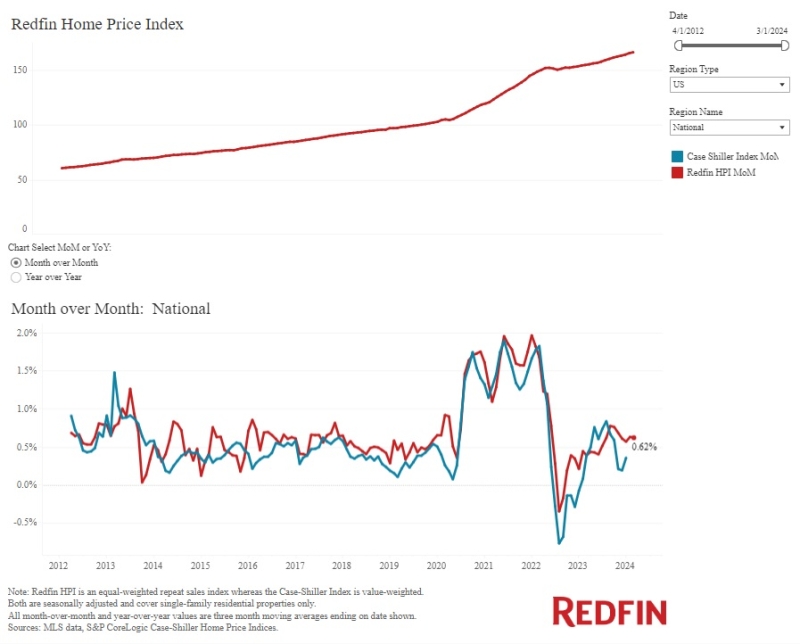Advertisement
Regulatory compliance outlook: New Good Faith Estimate and HUD-1 Settlement Statement

The U.S. Department of Housing & Urban Development (HUD) published a final regulation on Nov. 17, 2008. This final regulation made substantial changes to Regulation X, the implementing regulation of the Real Estate Settlement Procedures Act (RESPA). Among other things, HUD has made substantial changes to the: Good Faith Estimate (GFE), HUD-1 Settlement Statement (HUD-1), HUD-1A Settlement Statement (HUD-1A), and Settlement Cost Booklet1.
This month’s column will highlight certain features of the new Good Faith Estimate and the HUD-1 and HUD-1A Settlement Statements.2
Implementation Date: January 1, 20103
The new GFE
The new GFE is three pages in length and contains more information than the previous GFE. Main sections of the new GFE include:
►General headings (originator and borrower information)—Page 1
On the top of page one you will see the General Headings information. The left-hand side gathers information about the originator, including name, address, phone number and e-mail address. The right-hand side gathers information about the borrowers, including name and address. This section also includes the date that the GFE is prepared.
► Purpose (See “Shopping for Your Loan”)
► Shopping for your loan
The “Purpose” and “Shopping for Your Loan” sections, containing standardized language from HUD. These sections explain to the borrower the purpose of the GFE and how to use it to shop for the loan that is best for that borrower.
► Important dates
This section contains dates that are important to the borrower and lender.
► Line #1: The originator provides the date (and time, if necessary) through which the disclosed interest rate information is available. Note: This is not intended to be an interest rate lock.
► Line #2: The originator provides the date through which all settlement service charges disclosed on the GFE are available. HUD requires this date to be at least 10 business days from the date of the GFE, in order to give the borrower time to shop around for the best mortgage.
► Line #3: The originator provides information about the rate lock. After the rate has been locked, the borrower will have a stated number of days to go to settlement in order to receive the locked interest rate.
► Line #4: The originator lists the number of days before settlement that the interest rate must be locked.
► Summary of your loan
This section includes information about the initial loan amount, loan term, initial interest rate, and periodic (i.e., monthly) payment amount.
► This section also includes specific “yes or no” questions with regard to whether the interest rate, loan balance, and payment amounts can increase during the life of the loan.
► There are specific “yes or no” questions with regard to whether the loan has a prepayment penalty or a balloon payment.
Note: If the answer to any of these questions is “yes,” then the new GFE requires additional information about that feature.
There are many calculations in this area that have not been a part of previous RESPA requirements before (i.e., new monthly payment at first interest rate change date or maximum monthly payment for a variable rate loan). Review carefully.
► Escrow account information
The Escrow Section discloses if the originator requires an escrow account to be set up to pay such items as hazard insurance, real estate taxes, and so forth. Note: The monthly payment amount disclosed here includes only principal, interest, and any mortgage insurance, but does not include taxes and insurance (escrows).
► Summary of your settlement charges
This section contains a summary of (A) the adjusted original charge, (B) charges for all other settlement services, and (A + B) the total estimated settlement charges. Detailed information about the charges appears on Page 2. The amounts are summarized on Page 1 for the borrower’s convenience.
► Understanding your estimated settlement charges—Page 2
► Your Adjusted Origination Charge
This subsection consists of blocks.
► Block #1: The loan originator discloses all the charges that the loan originator will receive, except for any charges for the specific interest rate chosen (i.e., the discount points).4
► Block #2: Discloses the credit or charge (points) for the specific interest rate chosen.5
► Transactions not involving a broker.
There are two choices:
(1) Lender discloses the points or yield spread premium as part of the origination charge in Block #1. If the lender chooses this approach, then in Block #2, the lender should check the box that says, “The credit or charge for the interest rate of ___% is included in ‘Our origination charge.’ (See item one above)”
(2) Lender discloses the points or yield spread premium as a separate line item in Block #2. If the lender chooses this approach, then in Block #2, the lender should follow the instructions for transactions involving brokers.
► Transactions involving a broker.
For transactions involving brokers, brokers do not have the option of using the first check box in Block #2 (to indicate that the credit or charge for the interest rate is included in the origination charge). Brokers must check either the second or the third check box under Block #2.
(1) If there is a yield spread premium being paid, check the box that says, “You receive a credit of $___ for this interest rate of ____%. This credit reduces your settlement charges.” Note: The amount of the credit is listed as a negative number.
(2) If points are paid to the lender, check the box that says, “You pay a charge of $___ for this interest rate of___%. This charge (points) increases your total settlement charges.” Note: The amount of the charge is listed as a positive number.
Note: At the bottom of this subsection is a line designated as Line A–“Your Adjusted Origination Charge.” The amount disclosed here is the sum of the “Our origination charge” and the credit or charge for the specific interest rate chosen.
► Your charges for all other settlement charges
This subsection consists of various blocks:
► Block #3: The fees disclosed are those fees for which the loan originator chooses the service provider. The individual services and the charges for those services are disclosed and totaled in the right hand column.
► Block #4: Is for title services and lender’s title insurance. The lender’s title insurance premium is included in this total.
► Block #5: Includes the owner’s title insurance fees, regardless of who pays for it.
► Block #6: Is for the required services for which the borrower can choose the service provider. The borrower can choose a service provider from a list that the loan originator may provide, or the borrower can shop for a provider on his/her own.6
► Block #7: Discloses the total of the government recording charge.
► Block #8: Discloses the total of the transfer taxes.
► Block #9: Discloses the initial deposit for the escrow account (if applicable).
► Block #10: Discloses the amount of daily interest charges from the date of settlement until the first day of the next month of the first day of the normal mortgage payment cycle. Note: Also discloses the per diem charges, the number of days for interest charges, and the estimated date of settlement.
► Block #11: Discloses the types and amounts of homeowners insurance that will be required to be paid by settlement and totaled in the right hand column.
Note: At the end of this subsection is a line designated as B – “Your Charges for All Other Settlement Charges.” The amount disclosed here is the total of all the charges under “Your Charges for All Other Settlement Charges.” Lines A and B are totaled together to disclose the “Total Estimated Settlement Charges.”
► Understanding which charges can change at settlement—Page 3
This section gives information to the borrower to help the borrower understand what to expect for final charges on the HUD-1 Settlement Statement. There are no completion fields in the Understanding section; therefore, it is important to place each fee in the appropriate category. Charges fall into one of three categories:
1. Charges that cannot increase at settlement
2. The total of these charges can increase up to 10 percent at settlement
3. These charges can change at settlement.
Note: These charges can be understood as three types of tolerances (respectively):7
1. Zero Tolerance
2. 10 Percent Tolerance
3. No Tolerance
► The loan originator is bound by the initial GFE and the tolerances described in the Understanding about which charges can change at settlement. There are a limited number of circumstances under which a revised GFE may be given. The revised RESPA rules refer to this situation as a “changed circumstance.” If a changed circumstance allows for re-disclosure of the GFE, then the charges from the re-disclosed GFE will be used when comparing the GFE charges with the HUD-1 charges. This comparison is found on page 3 of the new HUD-1.8
Note: the rule also provides a remedy for tolerance violation (and HUD itself has acknowledged that fee tolerance may be difficult to meet at times): Violations of fee tolerance can cured by reimbursing borrowers the amount by which the tolerance was exceeded. (Reimbursement must be made at settlement or within 30 days of settlement.)
► A “changed circumstance” includes the following:
► An act of God, war, disaster, or other emergency.
► Information particular to the borrower or the transaction, that was relied on in providing the GFE and that changed or was found to be inaccurate after the GFE was provided.
► New information particular to the borrower or the transaction, which was not relied on in providing GFE.
Exceptions:
(1) GFE expires (i.e., exceeds the 10 business days disclosed on page 1 and the borrower requests another initial GFE); and
(2) Interest rate dependent fees, if the loan has not yet been locked.
► Using the tradeoff table
The table in this section is meant to help the borrower compare the transaction disclosed on the GFE with similar transactions:
► The same loan with lower settlement charges but a higher interest rate.
► The same loan with a lower interest rate but higher settlement charges.
Note: Loan originators have the option of completing this section.
► Using the shopping chart
The shopping chart section is meant to give the borrower the ability to compare the information from this GFE with the information from the GFEs of other loan originators.
► The “This loan” column is completed by the loan originator. Columns labeled “Loan 2,” “Loan 3” and “Loan 4” would be completed by the borrower by hand as the borrower shops around with other loan originators.
► If your loan is sold in the future
This section informs the borrower that the lender may sell the loan after settlement.
► The new HUD-1 and HUD-1A Settlement Statements
The new HUD-1 (and HUD-1A) compares the fees disclosed on the GFE and the HUD-1 Settlement Statement. However, the HUD–1 Settlement Statement now consists of three pages (the HUD–1A consists of two pages). It should be noted that HUD made similar revisions to both the HUD-1 and the HUD-1A. Therefore, references herein to HUD-1 apply as well to the HUD-1A.
Main sections of the new HUD-1:
► Page 1: No substantive changes.
► Page 2: Certain substantive changes.
Lines now refer to Block numbers from the GFE. This is meant to help the borrower understand how the charges from the GFE are now populated on the HUD-1.
► Page 3: New page, with numerous substantive changes.
► Top Section
The top of the page has a comparison of the GFE and HUD-1 charges. Comparisons are divided into three areas:
► Charges That Cannot Change
► Charges That in Total Cannot Increase More Than 10%
► Charges That Can Change
This part of the new HUD-1 is correlated to the “Understanding” section discussed above (Page 3 of the GFE), indicating which charges can change at settlement. As noted above, the new Understanding section gives detailed information regarding which of the three areas is appropriate for a particular charge.
Note: In the subsection “Charges That in Total Cannot Increase More Than 10%,” the GFE charges and the HUD-1 charges are totaled (for those charges that fall into this category). If the HUD-1 totals higher, the dollar amount of the difference must be disclosed, along with the concomitant percentage change. The change may not exceed 10 percent, without violating the 10 percent change limitation in this category.
Bottom Section
The bottom half of Page 3 provides a summary of the loan terms, similar to the “Summary” on the GFE (see above). The section includes information about the initial loan amount, loan term, initial interest rate, and periodic payment amount. There are also certain “Yes” or “No” questions regarding whether or not the interest rate, loan balance and payment amounts may increase during the life of the loan, and if the loan includes a prepayment penalty or a balloon payment.
Any affirmatively answered item requires additional information, and spaces are provided for completing required information relating to that feature.
The final block contains the “Total monthly amount owed including escrow account payments.” Unlike the GFE, this area of the HUD-1 gives the initial monthly payment, which includes principal, interest, mortgage insurance (if any), taxes and insurance (escrows).
Note: The area on the GFE correlating to this are of the HUD-1 gives the dollar amount for the initial monthly payment, including only principal, interest, and mortgage insurance (if any).
Submit your questions …
Do you have a regulatory compliance issue that you’d like to see addressed in the Regulatory Compliance Outlook Column? If so, e-mail your issue or concern to Jonathan Foxx at [email protected].
Jonathan Foxx, former chief compliance officer for two of the country’s top publicly-traded residential mortgage loan originators, is the president and managing director of Lenders Compliance Group, a mortgage risk management firm devoted to providing regulatory compliance advice and counsel to the mortgage industry. He may be contacted at (516) 442-3456.
Footnotes
1-HUD is publishing revisions to the Settlement Cost Booklet. This new booklet must be used along with the new GFE and HUD-1.
2-For more detailed information, please review the following Appendices from the RESPA regulation: Appendix A—Instructions for completing the HUD-1 and HUD-1A; Appendix C—Instructions for completing the Good Faith Estimate (GFE).
3-Lenders can choose to implement the GFE and HUD-1 earlier than Jan. 1, 2010.
4-All of these various charges (i.e., origination fee, application fee, underwriting fee, etc.) and their impact on APR and Section 32 are all lumped together into the “origination charge” for purposes of disclosure on the GFE and the HUD-1.
5-Completed in different ways, depending upon whether a broker is involved in the transaction.
6-If the loan originator does provide a list of service providers, the loan originator is held accountable for the accuracy of the disclosed charges.
7-The revised RESPA rule allows for the use of an “average charge,” based on the average charge for a class of transactions. For instance, averages from a specific time period between, say, 30 days and six months, given a common geographic area, and the same loan type. The “average charge” must be used for all transactions within that class. The “average charge” rule went into effect Jan. 16, 2009.
8-The only fees that may change are fees that were affected by the changed circumstance.
About the author





